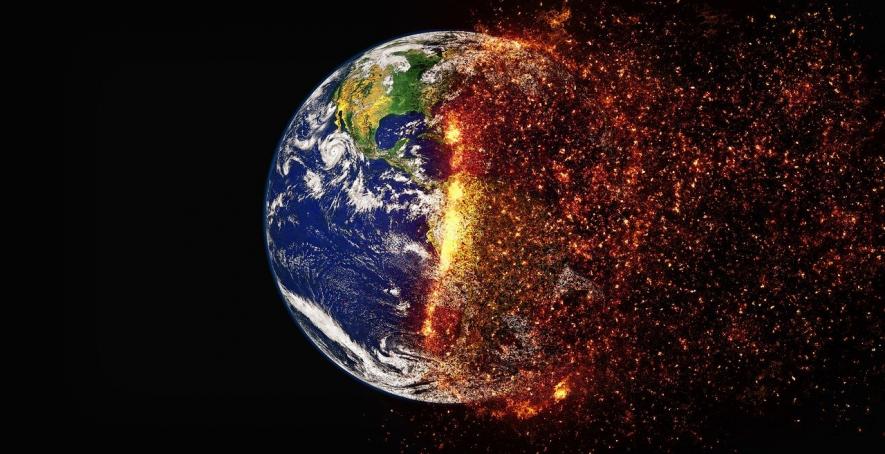World Far Behind in Clean Energy Investment to Curb Climate Change, Warns IEA Report

Representational image. | Image Courtesy: pixabay
The IEA (International Energy Agency) has published a warning message ahead of the United Nations Climate Change Conference (COP26) meeting scheduled at the end of this month in Glasgow, Scotland, in its ‘World Energy Outlook’ 2021 published on 13th October. It said that the world remains far behind to put global emissions into a sustained decline to achieve the net-zero level.
“The world is not investing enough to meet its future energy needs, transition‐related spending is gradually picking up, but remains far short of what is required to meet the rising demand for energy services in a sustainable way”—the IEA said in its report.
The Paris based watchdog also gave a concerning signal—that this year will witness the second-biggest annual rise in the emission level of the greenhouse gas carbon dioxide. The carbon dioxide emissions arise mainly from fossil fuel burning. Even if there is a rapid growth of renewable energy sources seen in many parts of the world, an overwhelming demand for coal and oil are driving the rise in emissions in 2021. Worryingly, the demand for coal and gas is likely to nullify the effect of reduced carbon dioxide emissions due to lockdowns and other restrictions put in place last year.
Importantly, in recent weeks, power prices have soared to a record level due to increased oil and natural gas prices, and widespread energy shortages have engulfed Asia, the US, and Europe.
Against this backdrop, the IEA, in its report, warned that investment in renewables like solar, wind, and hydropower needs urgent attention. These sectors need a more significant share so far as energy investment is concerned in the post-pandemic situation.
Although renewables will comprise greater than two-thirds of power investment this year, a significant gain in coal and oil use will cause the second-largest annual increase in emission, which is estimated to be a staggering 1.2 billion tonnes, the IEA said in its report.
The IEA also said that global policy towards attaining net-zero emissions could save consumers from future energy price hikes. Tim Gould of IEA quoted to have said in a statement—“the current energy price spikes the world is facing, which are driven primarily by soaring gas prices, are not caused by a transition to cleaner energy. In fact, the group’s analysis suggests that renewables, energy efficiency and electric cars may hold the answer to protecting against a repeat of today’s crisis.”
The IEA modelled the energy price in 2030 when coal and oil would touch the highest level. The model found that the energy price for households will be 30% less costly in the scenario of the world heading towards a net-zero emission by 2050 compared to the path that the world is currently on. Notably, fossil fuels, like coal, oil and natural gas, have made up around 80% of the world energy demand in 2020, while renewables account for only 12%.
The IEA said that if the world is on the track of meeting the Paris Agreement’s goal of containing global warming not to go beyond 1.5 degrees Celsius than the pre-industrial level, then the requirement is to move in an unambiguous direction. “The path to that target is difficult and narrow, but nonetheless is a hopeful one”—the report said.
Get the latest reports & analysis with people's perspective on Protests, movements & deep analytical videos, discussions of the current affairs in your Telegram app. Subscribe to NewsClick's Telegram channel & get Real-Time updates on stories, as they get published on our website.























